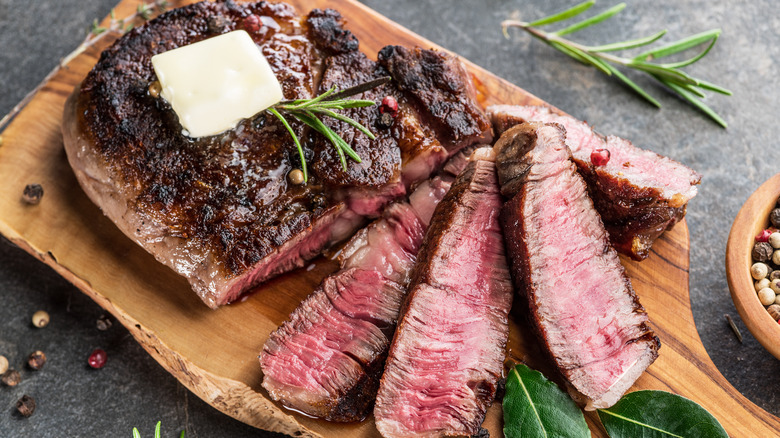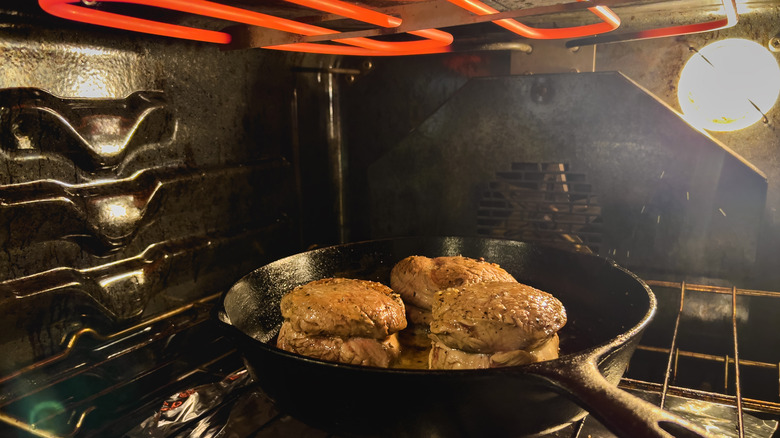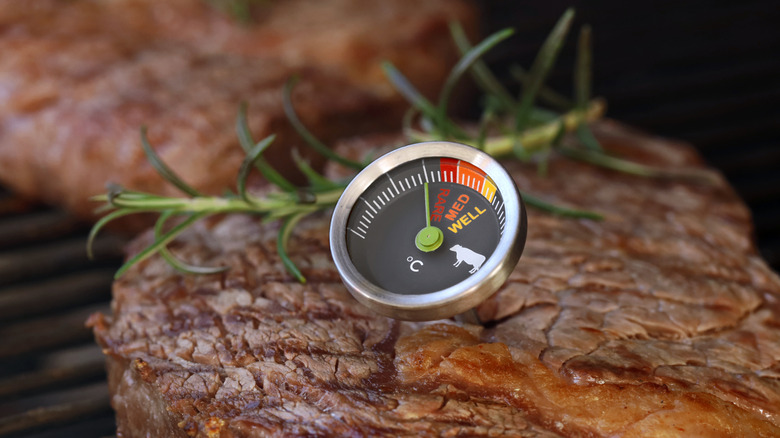The Easy Way To Prevent Smoking Out Your Kitchen When Broiling Steak
One of the wildest facts about Ruth's Chris Steakhouse is that it uses ultra-powerful broilers that reach 1800 degrees Fahrenheit to cook its steaks. While your home broiler is nowhere near as powerful, it can create an admirably browned steak with a great crust. The problem is, if you don't prepare correctly, you could end up with a kitchen full of smoke and a blaring smoke alarm. What are you doing wrong? One of the biggest mistakes people make when using their home broilers is forgetting that high heat combined with fat or oil creates smoke. While there are several moves you can make to prevent smoke before turning on the heat, trimming any excess fat from the steak is an easy one that will guarantee less smoking.
While fat equals moisture and flavor in steak, some cuts have extra fat around the outside that will burn under high heat. Those are the cuts that you want to fully trim before broiling. New York strip, ribeye, and porterhouse are three of the cuts with the most fat. Trimming this fat will in no way affect the marbled fat inside the meat that will give it the best flavor.
Other ways to prevent steak flare-ups while broiling
Another way to prevent flare-ups is to choose a leaner cut of meat like filet mignon, flank steak, or top sirloin. Remember that these meats have less fat, so overcooking will result in tougher meat. Whatever steak you cook under the broiler, it's essential to use the right pan. One of the tricks that will take your broiler game up a notch is to use a broiler pan. This shallow pan has openings that allow the grease to drip away from the heating element, keeping it from flaring up and causing smoke. You should also never use a marinade if you plan to broil meat, because sugary ingredients tend to burn.
Also, you need to take into account the thickness of the steak that you are cooking. A thinner piece of meat needs to be placed closer to the element, so it doesn't turn into shoe leather before the outside burns. A thicker piece of meat needs to be placed further away, so the inside cooks while the outside browns. You could also use your broiler to reverse sear a steak that's been cooked in a lower oven to your desired temperature. Since much of the fat has already been rendered off, there will be less smoke.
How to use your broiler correctly
The most important tip for using the broiler correctly is to understand your broiler. Every broiler varies in terms of the level of heat and source. Be sure to read your owner's manual, which will have information about the optimal preheating time and whether or not to leave your door open. Generally, gas broilers are used with closed doors and electric broilers can be used with the door open. Also, you are going to have to stand by and check your food often for the desired level of browning. Broiling isn't the time to walk away and do something else.
Distance from the heating element will also be very important. Place food closer or farther from the heating element depending on the thickness. Thick foods will need a longer time to cook internally before overcooking or charring on the outside. Always use a food thermometer inserted into the thickest part of the meat to ensure the food reaches a safe temperature for consumption.


